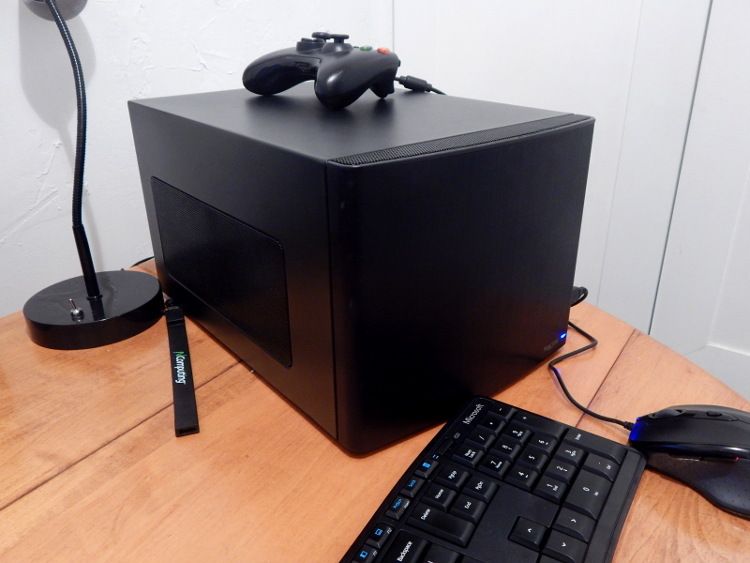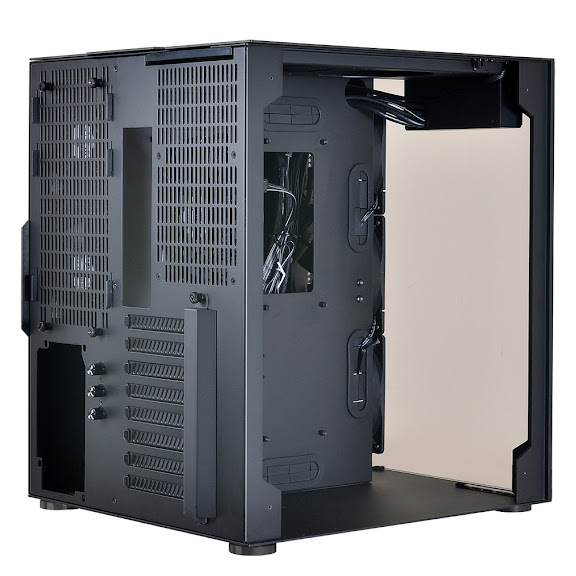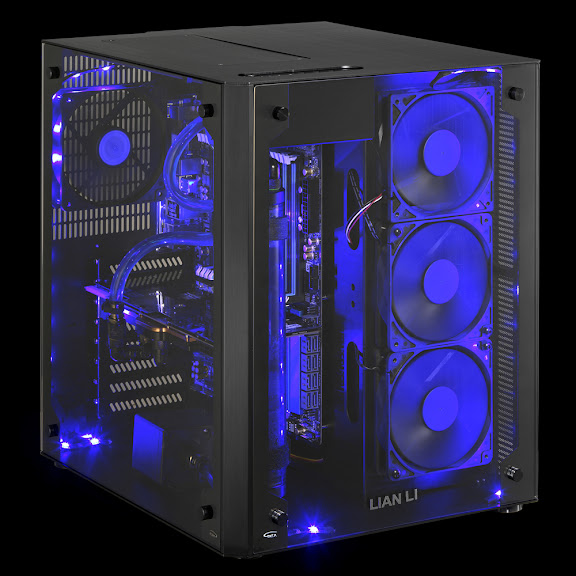Subtervotion
Member
You could possibly get away with installing all the new correct drivers, but I'd really suggest reformatting to avoid any weirdness.
Thanks.
You could possibly get away with installing all the new correct drivers, but I'd really suggest reformatting to avoid any weirdness.
I'm not sure I understand.Is there a good resource which factors in air-cooling OC performance for CPUs?
I'm looking for pure gaming performance and I don't mind going back to sandy bridge.
Those are both single threaded, so it could be that they were pushing a single core hard enough to need more juice? I'm not sure.Anyone have any experience overclocking on a ASUS RoG Maximus VI Gene mobo? I OC'd my 4770k and set an adaptive voltage of 1.25V. However, I've seen my voltage spike up to 1.33V (checked in HWMonitor) when playing games (WoW, WC3). I know that software running AVX instructions will override the adaptive setting and get an additional .1 volts of power. I doubt these games fall into that category of software though.
I'm not sure I understand.
However, top end real-world performance will be pretty much the same on high end air coolers as high end closed loop water coolers. The max overclock with sane voltage on a 4790K is within limits on a Hyper 212 Evo. It has plenty enough dissipation for the relatively low wattage on a 4790K.
The high end water stuff (or high end Air, for that matter) is best suited for high power consumption parts like the enthusiast series of processors on the 2011-V3 socket.
If that answered your question properly, then I think I get it.
That answers most of my poorly articulated question
With the K-series and a Hyper 212 Evo, what will I see in terms of OC performance at each generation?
I remember when sandy bridge came out, it was easier to OC than Ivy Bridge, etc.
Basically I want to max my $/performance, but don't care about mobo features between the generation.
With a Hyper 212 EvoThat answers most of my poorly articulated question
With the K-series and a Hyper 212 Evo, what will I see in terms of OC performance at each generation?
I remember when sandy bridge came out, it was easier to OC than Ivy Bridge, etc.
Basically I want to max my $/performance, but don't care about mobo features between the generation.
Depends how high you overclock (according to your needs and capabilities), what generation/architecture it is (as you said, IB was not as good as SB), the motherboard being used to achieve the overclock (has to do with delivering power to the CPU properly and allowing settings), and silicon lottery (not all samples of the same CPU will achieve the same overclock at the same voltage settings) For a more apples-to-apples comparison, see these two articles.
http://www.ocaholic.ch/modules/smartsection/item.php?itemid=1158
http://www.ocaholic.ch/modules/smartsection/item.php?itemid=1164
With a Hyper 212 Evo
Sandy (1155) - 4.5-4.6ish
Ivy (1155) - Heatwall w/o delidding
Haswell (1150) - Heatwall w/o delidding
Haswell Devil's Canyon (1150) - 4.5-4.6 (silicon and/or heat limit w/o delidding)
Sandy-E - 4.2-4.5
Ivy-E - 4.2-4.5
Haswell-E - 4.2-4.5
Just rough estimates. But as a general rule, if you're on a consumer socket processor, expensive heatsinks are a waste of money because the processors don't produce enough heat (in watts) to make something that can dissipate 300W worth it, especially since they have relatively low max overclocks due to thermal issues with the TIM and heatspreader.
Is the MSI 970 4G the sweet spot for solid 1080p/60 performance? Based on £ and performance?
I'll possibly be wanting to play bf4/SW/CS:GO at 1080p and maybe the Witcher 3. 1080p will be the max res I go to.
Reformat after installing the new hardware.I posted earlier about upgrading my mobo and cpu. I'm pretty sure I'll have to reformat. My question is: do I reformat everything, then physically install the hardware? Also, I have an OEM windows 7. Will that matter?
Reformat after installing the new hardware.
Yep. Shouldn't be a problem.Thanks. Will OEM be a problem? I keep reading that you have to just call ms and they give you a new key as long as you're only using it on one pc.
So since I pretty much set up everything, any antivirus software you gus could recommend ?
Got it ! Is Essentials good too ? Also what about Kaspersky?I use avast.
I've used it for over 10 years and have never had an issue with it other than the occasional false positive.
Microsoft antivirus are by far the worst. It got .5 / 6.Got it ! Is Essentials good too ? Also what about Kaspersky?

I've heard Kaspersky is pretty good but avast is fine as wellGot it ! Is Essentials good too ? Also what about Kaspersky?

I love my K70 but I'm too dumb to figure out the software.

For a high end KB, I'd suggest Ducky Mini:

I need this case omg
Lian Li PC-08 - $400




Whoah :0 nice oneJust wanna chime in and say I'm really, really happy with my Asus VX24AH.

24" IPS panel @ 1440p
There's absolutely better, as it's by far the cheapest 1440p panel I could find, but after my disastrous g-sync monitor I'm stoked at how nice this image looks. sRGB looks a bit shit surprisingly, but some tinkering in the other modes gives a fantastic image. Very sharp, great colours. Slight lag as you'll find in all IPS monitors, but as someone super sensitive to input lag it's nothing serious at all. Thin bezel and simple, attractive design. Arrived without a single busted pixel, which is a first for me. And while it's not 27"+, I actually prefer the smaller size, high resolution monitors, as it leads to a frankly gorgeous pixel density. Playing 2480 x 1440 with this pixel density creates a stunningly smooth, sharp image basically devoid of even the slightest visible gap between the pixel.
So yeah. It wont be up to everyone's standard, but if you're looking for a very affordable yet decent IPS @ 1440p monitor and happy to go with a smaller display with greater pixel density over larger stuff, I highly recommend the VX24AH.
I need this case omg
Lian Li PC-08 - $400




My eyes must be reading these wrong because it looks like it's sucking air through the plastic front cover??
Like with other dual-chamber designs we've seen, the motherboard is isolated in one half of the case, while the PSU and storage devices get a shared space of their own. But unlike those other bicameral cases, Lian-Li puts the PC-O8's intake fans in the front of the storage and PSU chamber. That might make sense with a liquid-cooling setup, since heated airflow from the radiator won't pass over the graphics card or CPU on its way out of the case. It's a little weird for air-cooling, though.
Out of curiosity, how does the AMD Athlon X4 860K compare to similar Intel CPUs in terms of pricing?
I love Lian-Li so much.
That thing is basically a Corsair 540, but you know, actually decent ;-p
Just wanna chime in and say I'm really, really happy with my Asus VX24AH.
https://pbs.twimg.com/media/CLJ9KnTUYAAYNI3.jpg[img]
24" IPS panel @ 1440p
There's absolutely better, as it's by far the cheapest 1440p panel I could find, but after my disastrous g-sync monitor I'm stoked at how nice this image looks. sRGB looks a bit shit surprisingly, but some tinkering in the other modes gives a fantastic image. Very sharp, great colours. Slight lag as you'll find in all IPS monitors, but as someone super sensitive to input lag it's nothing serious at all. Thin bezel and simple, attractive design. Arrived without a single busted pixel, which is a first for me. And while it's not 27"+, I actually prefer the smaller size, high resolution monitors, as it leads to a frankly gorgeous pixel density. Playing 2480 x 1440 with this pixel density creates a stunningly smooth, sharp image basically devoid of even the slightest visible gap between the pixel.
So yeah. It wont be up to everyone's standard, but if you're looking for a very affordable yet decent IPS @ 1440p monitor and happy to go with a smaller display with greater pixel density over larger stuff, I highly recommend the VX24AH.[/QUOTE]
Hows the backlight bleed and ips glow on it? Those are two things I currently hate about my current monitor.
I have one too and it's great for my needs but you can't deny that Lian Li is just in an entirely different class. Why it costs $400 as well.I have the Corsair 540 and I love it so much. What were your problems with it?
According to Techspot, the G3258 when overclocked will generally offer greater performance and when compared to AMD's FM2+ socket, Intel's socket 1150 is a better bet when it comes to upgrades.
Also, comparing the processors themselves on PCPartPicker, the G3258 is $5 cheaper. Motherboards cost about the same, around $50 and higher.
I reinserted my cpu
is 1200rpm idle good and 1400rpm on chrome?
You want temps. What is it idling on?
What's wrong with the 540I love Lian-Li so much.
That thing is basically a Corsair 540, but you know, actually decent ;-p
What's wrong with the 540
But I agree, that's a nice case. It is just too expensive at $400. That's as much as a Ps4!

LolGet that case

Don't quote me in this but I believe you need a Motherboard and a CPU that can support DDR4 RAM.Is there any reason to have DDR4 RAM over DDR3 RAM? The performance difference seems kinda negligible in gaming; does it even have a potential future of better gaming performance than DDR3? One of the main things about it seems to be increased speed of the RAM, but is there currently some sort of technological limitation holding back any potential benefit from faster RAM or something?
I have one too and it's great for my needs but you can't deny that Lian Li is just in an entirely different class. Why it costs $400 as well.
